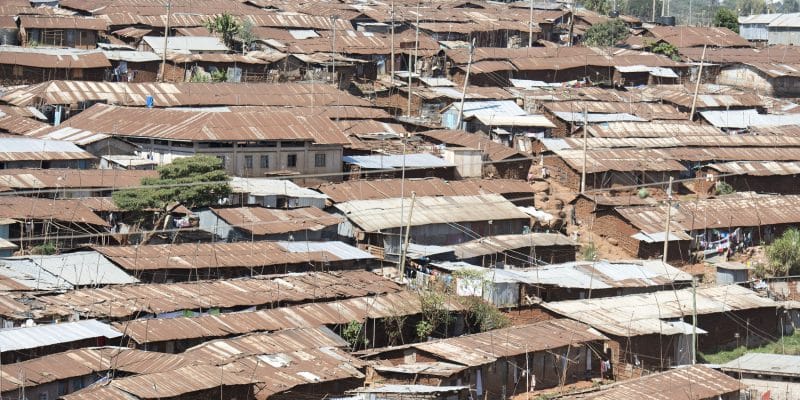The 2023 report on the development goals (SDGs) in Africa notes that the proportion of people living in shanty towns has fallen. This is an indicator of the continent's progress on SDG11, which concerns sustainable cities and communities.
Africa still has a long way to go when it comes to the eleventh Sustainable Development Goal (SDG11), the theme of which is “sustainable cities and communities”. However, as far as the sustainable habitat component is concerned, the 2023 report on the SDGs in Africa notes a reduction in the proportion of people living in shanty towns.
According to the United Nations Development Programme (UNDP), a shanty town is a disadvantaged part of a city characterised by very unhealthy housing built by the inhabitants from salvaged materials, extreme poverty and no rights or security of tenure. According to the World Bank, over 60% of Africa’s urban population now lives in shanty towns. These almost 285 million urban dwellers represent 60% of Africa’s urban population. In 2003, Africans living in shanty towns made up 71.9% of the urban population.
The reduction in the proportion of Africans living in shanty towns is mainly due to the efforts of North African countries. This is the only sub-region in Africa and the developing world where the number (8.7 million) and proportion of slum dwellers have fallen steadily (from 20% to 13%), according to the United Nations Habitat Organization (UN-Habitat). Egypt, Morocco and Tunisia have been the most successful countries in this respect. In sub-Saharan Africa, however, the total proportion of the urban population living in shanty towns has fallen by just 5%, or 17 million people.
To improve Africa’s progress on SDG11, the report recommends greater investment in infrastructure to improve access to public transport, waste management and air quality in African cities.
Read also-AFRICA: the continent is well on the way to achieving SDG 9
Entitled “Accelerating recovery from the coronavirus pandemic (Covid-19) and the full implementation of the 2030 Agenda for Sustainable Development and the African Union’s Agenda 2063 at all levels”, The 2023 Report on the MDGs in Africa was published on the sidelines of the 78th General Assembly of the United Nations by the UNDP, the African Union Commission (AUC), the United Nations Economic Commission for Africa (UNECA) and the African Development Bank (AfDB).
Boris Ngounou







